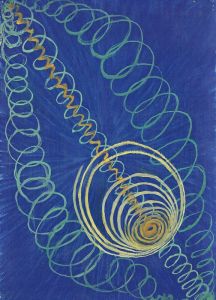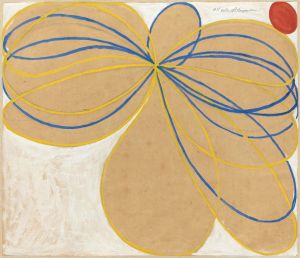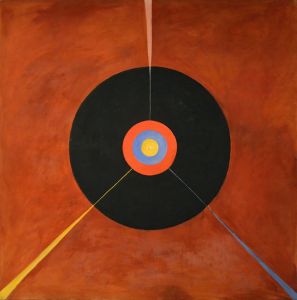
Childhood Group IV
A hand-painted replica of Hilma af Klint’s masterpiece Childhood Group IV, meticulously crafted by professional artists to capture the true essence of the original. Each piece is created with museum-quality canvas and rare mineral pigments, carefully painted by experienced artists with delicate brushstrokes and rich, layered colors to perfectly recreate the texture of the original artwork. Unlike machine-printed reproductions, this hand-painted version brings the painting to life, infused with the artist’s emotions and skill in every stroke. Whether for personal collection or home decoration, it instantly elevates the artistic atmosphere of any space.
Hilma af Klint was a Swedish artist and mystic whose work has gained significant recognition for its pioneering role in abstract art. Born in 1862, af Klint was part of a group of women artists called "The Five," who shared her interest in spiritualism and theosophy. Her work remained largely unknown until the late 20th century, as she believed the world was not ready to understand her art during her lifetime.
"Childhood Group IV" is one of the many works created by Hilma af Klint, although specific details about this particular piece are not widely documented. Af Klint's oeuvre is characterized by its abstract forms, vibrant colors, and spiritual symbolism, often reflecting her interest in the mystical and the esoteric. Her paintings are known for their large scale and intricate compositions, which were groundbreaking at the time they were created, predating the recognized advent of abstract art by artists like Wassily Kandinsky, Kazimir Malevich, and Piet Mondrian.
Af Klint's work is deeply influenced by her spiritual beliefs. She was involved with the Theosophical Society and later Anthroposophy, which informed her understanding of the world and her artistic practice. Her paintings often explore themes of duality, unity, and the connection between the physical and spiritual realms. This spiritual dimension is a defining feature of her work, setting it apart from her contemporaries.
The "Paintings for the Temple" series, to which "Childhood Group IV" may belong, was a major project for af Klint, consisting of 193 paintings created between 1906 and 1915. These works were intended to be displayed in a spiral-shaped temple, reflecting her vision of a spiritual journey. The series is divided into several groups and sub-series, each with its own thematic focus, exploring concepts such as evolution, the human life cycle, and the spiritual dimensions of existence.
Af Klint's use of color and form was innovative and symbolic. She often employed geometric shapes, botanical motifs, and a vivid palette to convey complex spiritual ideas. Her work was not purely abstract; it was imbued with meaning and intention, serving as a visual representation of her spiritual explorations.
Despite her significant contributions to abstract art, Hilma af Klint's work was largely overlooked during her lifetime. She stipulated that her art should not be shown until at least 20 years after her death, believing that future generations would be better equipped to understand it. It wasn't until the late 20th and early 21st centuries that her work began to receive the recognition it deserved, with major exhibitions and retrospectives bringing her art to a wider audience.
Today, Hilma af Klint is celebrated as a pioneer of abstract art, and her work is studied for its innovative approach and spiritual depth. Her paintings continue to inspire and intrigue audiences, offering a unique perspective on the intersection of art and spirituality. While specific information about "Childhood Group IV" is limited, it can be appreciated within the broader context of af Klint's visionary body of work.








